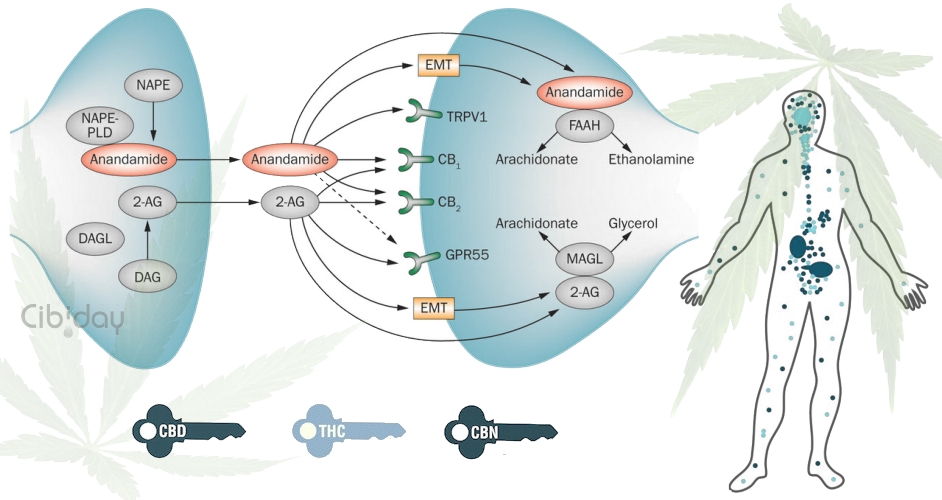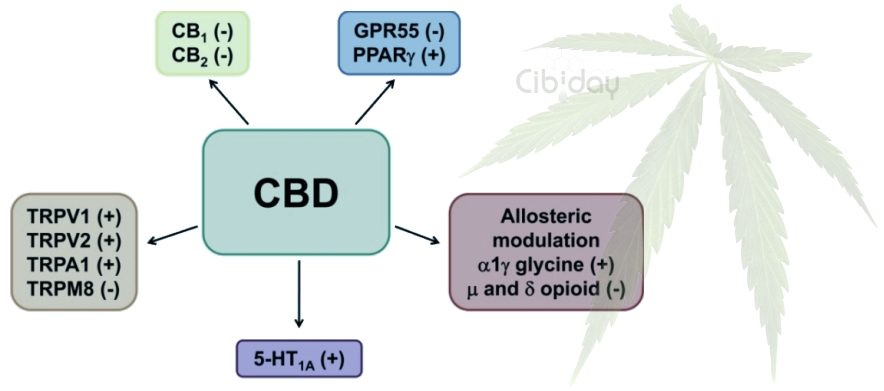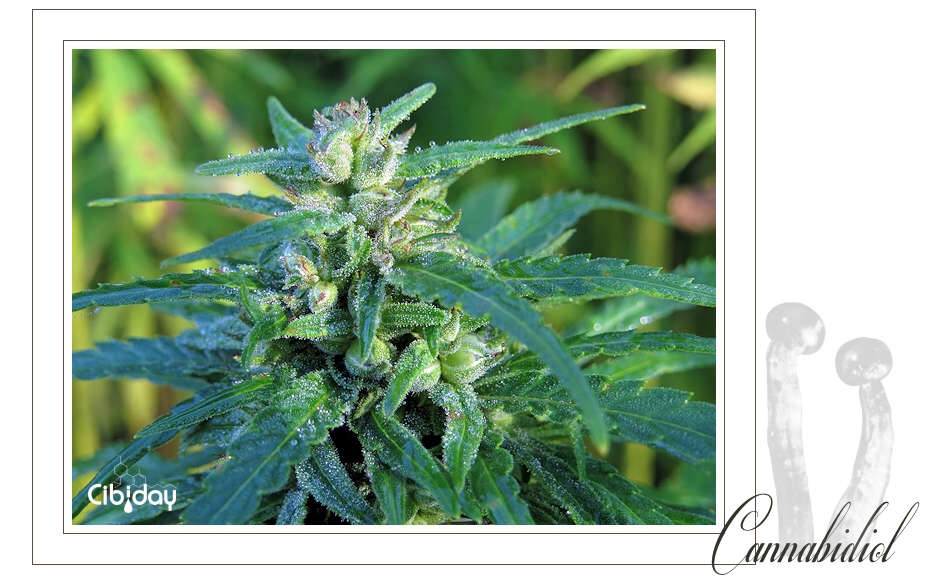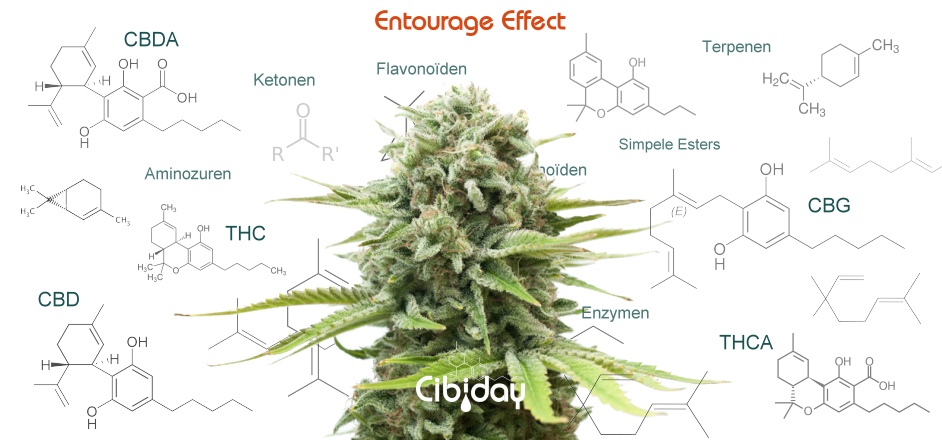How does CBD function in our body?
Ever more people are finding out that the cannabis (hemp- and weed plants) ingredient cannabidiol, CBD for short, can be considered a natural and beneficial remedy.
CBD with ingestion Despite the fact many people are still somewhat hesitant to administer CBD products from hemp, there is a greatly increasing interest in this unique plant. The most extraordinary fact people experience after use, is that no unpleasant situations occur, like for instance a psychoactive effect. Something a lot of people expect because they confuse hemp with the psychoactive weed.
Moreover the body quickly absorbs CBD. In some cases the body even noticeably absorbs CBD oil in a few minutes. Furthermore it can be called remarkable and very unique that hemp is so incredibly broadly applicable.
The physiological process of cannabidiol
Despite the beneficial properties of cannabis plants already having been known globally for centuries, the physiological process of the components has only become somewhat clear after the discovery of the so-called endocannabinoid system in the '90s. During this extremely important discovery the conclusion was reached that certain chemicals which can be found in cannabis, the so-called cannabinoids, are almost identical to endogenous substances which our bodies manufacture naturally, the so-called endocannabinoids.
This means phytocannabinoids, as the plant cannabinoids are called, are in fact facsimiles of the endogenous cannabinoids, which means the body does not consider them as dangerous intruders, but as familiar cannabinoids. The natural immune system in the body therefore does not need to manufacture antibodies which it does manufacture when invaded by harmful substances.
Generating responses in the body
Both the plant as the endogenous cannabinoids are capable of binding to cannabinoid-receptors (a kind of antennae on cells), which occur in the entire body, but are mostly found in the brain and the immune system. After binding to these specific cannabinoid-receptors reactions are generated, which activate certain bodily processes. Besides that they can effect the memory for instance, these receptors are also involved in many other physiological processes including appetite, motor skills and your mood.
While studying the endocannabinoid-system it was discovered that the phytocannabinoid THC is a kind of copy of an endocannabinoid which is called anandamide. Just like this neurotransmitter, THC shows a binding affinity to the CB1-receptor. This is mainly found in the brain (central nervous system), but also in the lungs, liver and kidneys. Besides CB1 there is another cannabinoid-receptor called CB2, which primarily can be found in the immune system and the gastrointestinal tract.
What does CBD do in the body exactly?
The phytocannabinoid CBD, contrary to THC, does not have much binding affinity to the cannabinoid-receptors CB1 or CB2. It does however cause the endocannabinoid system to be stimulated indirectly. This is because it happens to be able to suppress the enzyme FAAH (Fatty Acid Amide Hydroxylase), which is responsible for the breaking down of anandamide.
When less FAAH is present, this will mean more anandamide will be available in the body and able to be stored. This results in the stimulation of the CB1-receptors. And it also promotes the production of 2-AG, an endocannabinoid which binds to both CB1 as well as CB2.
Interaction with TRPV-1 receptor
Despite the fact that CBD does not bind to the two cannabinoid-receptors, it can however still have an effect by binding directly to other G protein-coupled receptors. It also binds to the TRPV1 receptor (transient receptor potential vanilloid subtype 1), which for instance is involved in the regulation of body temperature.
TRPV1, which is mainly found in the peripheral nervous system but in other tissues including the central nervous system as well, is sometimes also called the vanilloid receptor, derived from the flavoursome vanilla pods. Vanilla contains eugenol, an essential oil which holds many beneficial properties and also helps to keep the blood vessels clear.
CBD stimulates the activation of receptors
In addition TRPV1 is also called the capsaicin receptor since capsaicin, the active and extremely sharp tasting substance in red peppers and chili peppers, also triggers it. After consuming hot peppers this ingredient activates the capsaicin receptors on the tongue which causes a burning and warm sensation. Because of this capsaicin is used in salves in order, by means of heat, to promote the blood flow and soften the skin.
CBD is known as a TRPV1 agonist, which means it stimulates this vanilloid receptor into activation.
Effect on certain processes in the body
It has also been discovered that CBD can have an effect on the body by activating the adenosine receptors. These receptors are involved with heart and blood vessels, oxygen consumption and blood flow. They also play an important part in the brain where they regulate the release of neurotransmitters like dopamine and glutamate. Besides dopamine being responsible for pleasure, enjoyment and well-being, it also plays an important part in overall health.
With high concentrations of CBD the serotonine receptor 5-HT1A (5-hydroxytryptamine) is directly activated. 5-HT1A belongs to 5-HT receptors which are activated by serotonin. They have an effect on various biological and neurological processes in the bod
Cannabidiol-rijke hennepplant
A third cannabis receptor?
Besides the fact that CBD activates the receptors mentioned above, some are of the opinion that it acts as an antagonist (counterpart) and is capable of blocking yet another G protein-coupled receptor named GPR55 (G protein-coupled receptor 55).
GPR55 is sometimes also called an orphan receptor, because it is suspected to belong to a larger family of receptors. Some even suspect we could be dealing with a third cannabinoid receptor. GPR55 is found in the brain and can be beneficial to blood pressure and bones.
Studies about CBD
So far the focus has mainly been on the study of the phytocannabinoids CBD and THC, but there is a long road of research still ahead.
The supposed entourage effect
Besides CBD and THC, hemp plants and weed plants contain well over a 100 other active phytocannabinoids, but also terpenes, flavonoids and other beneficial components, which according to some researchers just might be working together in certain ways.
According to them this mutual collaboration could cause even stronger effects. We emphatically would like to point out that this effect has not yet been proven in high-quality clinical research. At this moment in time there are mainly indications which give rise to the need for further research into the existence of this effect.
The unique plant has already revealed a lot of its secrets, a large number of which are extremely beneficial. Undoubtedly in the future many more exceptional properties are yet to be discovered.






